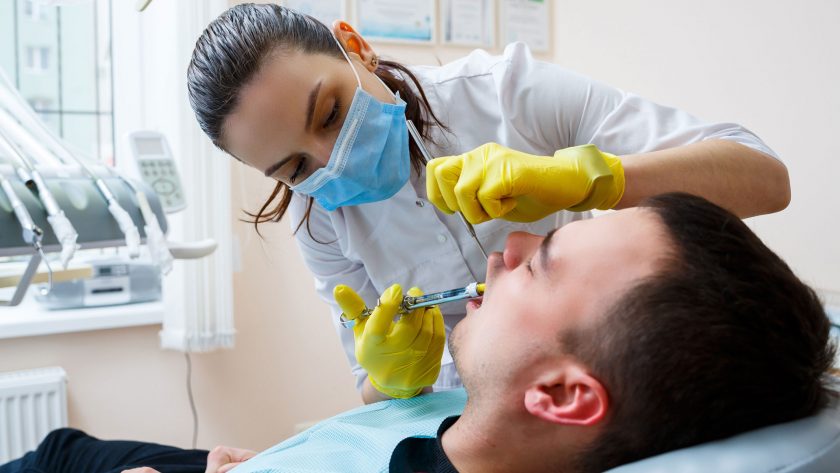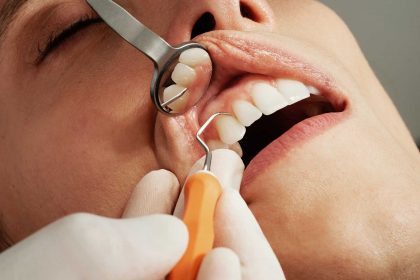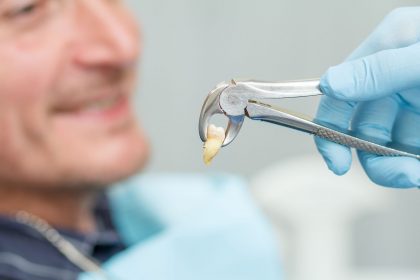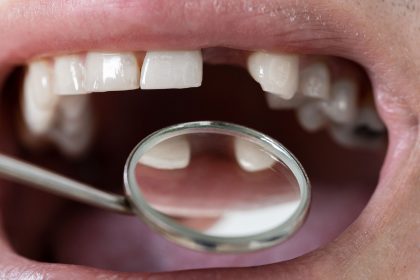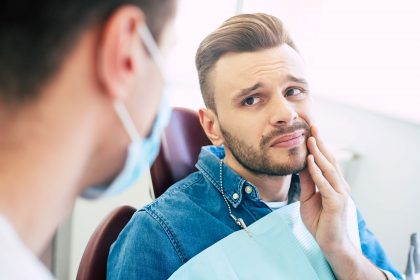We are fortunate to live in a time when dentists have easy access to safe and effective local anesthesia. Just try to imagine a root canal without it!
In the old days, people used whatever they could to numb up before a dental procedure. Popular options were cannabis, opium, alcohol, cocaine, and henbane. Anybody remember henbane?
But then starting in the early 1900s, novocaine changed the numbing game as a local anesthetic for desensitizing just the areas that needed it. Today most dentists rely on even safer and more effective successors to novocaine, such as lidocaine.
Both novocaine and lidocaine are local anesthetics used to numb nerves and block pain signals. Novocaine (aka procaine) is an older drug with possible side effects including restlessness, convulsions, dizziness, and allergic reactions. Lidocaine takes effect much more quickly, lasts longer, and has a much lower risk of side effects than novocaine.
Although patients still commonly refer to the anesthetic used by dentists as novocaine, novocaine is rarely used today.
Here are a few local anesthetics used in dentistry today that you should know about
Benzocaine — Benzocaine is a topical anesthetic used to numb just the top 1 to 2 mm of tissue. Dentists use benzocaine as a pre-numbing gel before injection of local anesthetic. This topical anesthetic comes in a variety of yummy flavors like bubble gum and piña colada and is typically delivered on a cotton swab to the treatment area.
Lidocaine (aka Xylocaine) — Lidocaine acts quickly and lasts from two to four hours. It’s the most common local anesthetic used in dentistry.
Articaine (aka Septocaine) — Articaine is even more effective than lidocaine, helped by the way it tends to diffuse better through bone. It lasts about as long as lidocaine.
Bupivicaine (aka Marcaine) — The numbness from bupivicaine lasts twice as long as that from lidocaine or articaine. This makes it a good choice for longer or more extensive procedures.
Mepivicaine (aka Carbocaine) and Prilocaine (aka Citanest) — For patients that need to avoid the use of epinephrine or who are allergic to metabisulfite, mepivicaine and prilocaine are good alternative local anesthetics. The numbness doesn’t last as long as other options, though.
Wait, where does the epinephrine come in?
Most local anesthetics have the side effect of dilating blood vessels, which increases blood flow. This can be a problem during surgery. So in these anesthetics, epinephrine is included as a vasoconstricting ingredient to counter this dilating effect. When epinephrine is used, sodium metabisulfate is added to increase the shelf life of the epinephrine. For patients sensitive to epinephrine or metabisulfate, alternative local anesthetics are available (see mepivicaine and prilocaine above).
What are the side effects of local anesthetics?
There are a number of potential side effects associated with novocaine. Allergic reactions are possible, including difficulty breathing, hives, swelling of the tongue, face, and lips, and closing of the throat. Patients may also experience trembling or convulsions, nausea or vomiting, chest pain or irregular heartbeats, drowsiness or dizziness, and anxiety or restlessness.
While similar side effects are possible when using more modern local anesthetics such as lidocaine and articaine, these side effects are uncommon—which explains why novocaine has been replaced by these safer and more effective drugs.
Still, precautions must be taken when using any drug. You’ll be asked to update your dentist on any medical conditions you’re experiencing or medications you’re taking, so possible complications and interactions can be avoided or prepared for.
Are the shots painful?
Not really. When topical benzocaine gel is used, you’ll be numb and won’t feel the needle go in. Dentists have learned that fast shots can be painful, so it might seem like the dentist is in there with the needle for quite a while. This might feel a bit uncomfortable, but you’ll feel more pressure than pain while the dentist slowly delivers the local anesthetic.
Even better, you’ll numb up pretty quickly and the treatment itself should be painless as well.
What about when the anesthetic wears off?
Depending on the anesthetic used, the numbness should start to wear off after about two to three hours. Your lips and tongue might remain numb for longer. You’ll probably feel a tingling sensation for a while, and there may be some tenderness at the sight of the injection. Finally, to avoid any embarrassing spills or drooling, it’s probably best to hold off on eating or drinking until the effect wears off.
